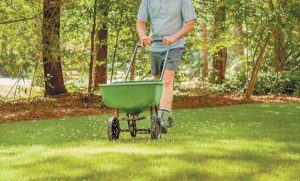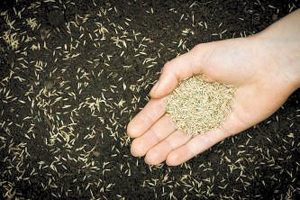May 1, 2023
Spring Lawn Maintenance Keys for Success
Extension turfgrass specialist discusses spring lawn maintenance considerations
By Adam Thoms
Assistant Professor and Extension Turfgrass Specialist
Iowa State University Extension
As soil temperatures increase and lawns across the state begin to green up, many Iowans will begin performing routine lawn maintenance. This spring, Iowa State University Extension and Outreach turfgrass specialist Adam Thoms provides tips for growing a lush lawn that will be the envy of the neighborhood.

photo courtesy of Iowa State Extension and Outreach
In order to properly maintain a lawn, it is essential to have the right tools. As Thoms explains, spring is the perfect time to perform routine lawnmower maintenance, including an oil change. It is also important to clean out or change the mower’s air filter at this time, since this improves the efficiency of the mower and saves money on gas.
As for sharpening mower blades, it’s better to wait until after the first mow of the season.
“Coming out of winter, there will be a lot of debris in the yard,” explained Thoms. “Things like sticks or rocks can dull the blades, so it’s best to sharpen mower blades immediately after your first mow of the season.”
When mowing, 3 to 3½ inches is an ideal height to cut for most lawns. Since Thoms recommends never removing more than one-third of the leaf blade, the ideal mowing frequency will vary between lawns depending on desired overall lawn height, as well as season and growing conditions.
“It equals out to be roughly weekly in the spring, then a little less in the summer,” said Thoms.
To ensure a verdant and crabgrass-free lawn this summer, it is also key to apply a spring weed and feed formulation that will provide necessary nutrients to the lawn while preventing crabgrass and other weed seeds from germinating. Check the bag to ensure that the product prevents crabgrass from emerging, as some weed and feed formulations provide only post emergence protection, and preemergence herbicides are ideal.
“You want to apply your spring weed and feed in mid-April, into the first week of May, or when soil temperatures have reached 55 degrees for three days in a row,” said Thoms. “I typically recommend using most other fertilizers in the fall.”
While not ideal, it is also possible to overseed a lawn in the spring. Overseeding can help repair or rejuvenate patchy lawns but is most effective when done in the fall. When overseeding in the spring, spring weed and feed formulations should not be applied since they will prevent both desirable grass species and undesirable crabgrass from germinating.

photo courtesy of Iowa State Extension and Outreach
One common misconception is that aerating a lawn impacts the effectiveness of preemergent herbicides. According to Thoms, aeration has no impact on herbicide effectiveness, and can provide a boost to newer lawns.
“If you have a yard that is five years old or less, I recommend aerating in both the spring and the fall to help sod or grass seed establish,” he said.
For more resources regarding spring lawn care, visit the Iowa State University Horticulture and Home Pest News Website.
Adam Thoms is Assistant Professor and Extension Turfgrass Specialist at Iowa State Extension and Outreach. For more information call (515) 294.1957 or email athoms@iastate.edu.
Filed Under: Community
Trackback URL: https://www.50pluslife.com/2023/05/01/spring-lawn-maintenance-keys-for-success/trackback/


